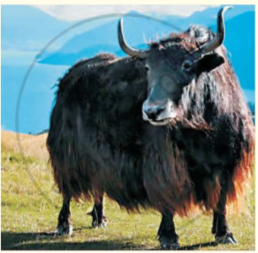Advertisements
Advertisements
प्रश्न
Answer the following question by ticking the correct option :
What was the tiger's counter-argument?
विकल्प
he said that he was the king of the jungle.
he claimed he ruled the world.
he said the situation would be reversed if he was the sculptor.
he threatened to devour the man in a moment
उत्तर
he said the situation would be reversed if he was the sculptor.
APPEARS IN
संबंधित प्रश्न
Answer the following question briefly:
Did Private Quelch’s day to day practices take him closer towards his goal? How can you make out?
Identify the rhyme scheme of the poem.
On the basis of your understanding of the poem, answer the following question
by ticking the correct choice.
All 'have their exits and their entrances'. Exits and entrances refer to __________.
Answer the following question briefly.
Do you like/dislike Gaston? Give reasons.
Imagine that you are one of the boys, and that the map on the next page is of the island on which you have landed. Your most urgent task is to decide where to live. Work in groups of four; decide where to set up camp, and the materials you will use. Be prepared to justify your choices to the rest of the class.
Another technique adopted by the writer is to use figures of speech such as a simile. A simile is used to express similarity between two things. e.g. He is as fast as lightning. The rain/ell heavily on the metal roof like a machine-gun. Similes usually start with 'like' or 'as'.
Find two similes in the last section of the story.
Imagine that you are conducting a research on the conservation of a few animal species in India. You have been asked by the Wildlife Trust of India to prepare a report on the future of the YAK that lives in the Ladakh region of the Himalayan mountains . In groups of four, discuss the issue and make notes for your report. Refer to the Question 2 and the information in the box given here.

| DOMESTIC YAK |
| herd animals 2-2.2 m tall |
| used in sports |
| kept for milk , fur , fibre , meat , drawing ploughs etc |

| WILD YAK |
| length:3-3. 4m |
|
habitat: treeless uplands
|
| killed for food |
| insulated from cold by dense, close matted under hair , shaggy outer hair |
| hunted for similar reasons as the domestic ones |
Within your group, discuss
• What is the problem? How has it arisen?
• What is the best way to preserve these species?
• Why do we need to preserve these species?
• What values need to be inculcated in the hearts of human beings? Why?
• What actions would you recommend to the World Wildlife Federation?
• How is global warming affecting these species?
Here are a few questions and statements written down by the Cultural Secretary that she/ he needs to share. Tick the correct words from those given in brackets:
- How (much/many) (chair/chairs) do we need?
- (Much/Several) (school/schools) will be participating.
- (Several/Much) (student/students) have arrived.
- How (much/many) (information/informations) does this brochure give?
- We have only (a few/a little) sponsors for (some/much) events.
While you were away on holiday, your house was burgled. Write a letter to
your friend to tell him or her about it.
Use the underlined expressions in Column A above to help you. Include ...
1. how the burglar could have got in,
2. how he knew you had gone away, and
3. what you could have done to prevent the burglary.
Complete the following passage on Dance by choosing the correct word from the given options. The first one has been done for you.
The fact that dance (a) is an art form is a well known fact. (b) ________ dance as a therapy is not known (c) ________ many. Dance therapy involves a synthesis of the grace and vigour (d) ________ Indian classical and folk dance movements into (e) ________ innovative and holistic therapy. It brings (f) ________ the inner feelings (g) ________ the participants and can help them (h) ________ develop a healthy personality.
| (a) (i) is (ii) been (iii) as (iv) being |
(b) (i) For (ii) Although (iii) But (iv) While |
(c) (i) by (ii) to (iii) in (iv) about |
(d) (i) on (ii) in (iii) of (iv) into |
| (e) (i) the (ii) a (iii) an (iv) as |
(f) (i) in (ii) of (iii) over (iv) out |
(g) (i) about (ii) for (iii) in (iv) of |
(h) (i) with (ii) in (iii) to (iv) into |
